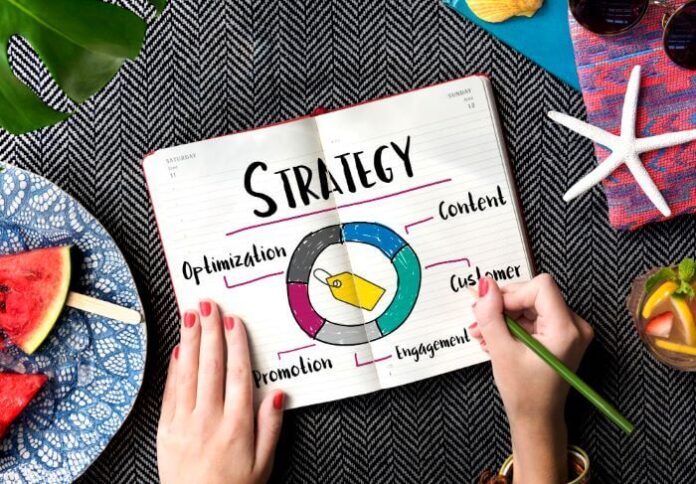In the ever-evolving landscape of marketing, the game-changer is personalization. It’s not enough to reach many people today; you need to connect with each person on a deeper level.
Personalization strategies are a dynamic way to make materials and messages more relevant to different groups of people. Moreso, it dramatically affects engagement, conversion rates, and brand loyalty.
So, in this post, we are going to be showing you different personalization strategies you can leverage for better engagement and conversion for your brand. Just keep reading.
How to Use Personalization Strategies to Promote Your Brand
#1: Understand Audience Segmentation
Figuring out how to divide an audience into groups is like figuring out all the complicated puzzle pieces. It includes putting other groups of people into a larger audience based on demographics, behaviors, and preferences.
This step is crucial for marketers. Why? Because it helps them understand the different wants and needs of other groups. By being aware of these differences, marketers can ensure that their strategies and materials fit the specific needs of each group.
Audience segmentation also helps marketers write messages that speak directly to the interests and wants of different groups. It doesn’t matter if they look at psychographic traits, buying habits, or age groups.
This knowledge is the basis for personalized marketing, ensuring that every interaction feels unique and essential to the audience in question.
#2: Craft Tailored Content
Customizing content requires more than just being able to relate to people. It’s about putting yourself in the shoes of different parts of the crowd and understanding their problems, hopes, and needs.
Marketers use various methods, such as creating dynamic content, making websites adaptable, and running interactive campaigns.
The purpose of all this is to tell stories that fit the interests and wants of each group. This method goes beyond regular marketing techniques. It’s about making customized goods that meet the specific needs of different groups of customers.
By adding empathy to the process of making personalized products, marketers turn simple goods into solutions that fit each person’s tastes. This creates a more vital link between the brand and its customers.
#3: The Power of Data-Driven Insights
In current marketing, insights based on data are compelling. They are like a bright light that shows all the little details of how people act.
Marketers use a considerable amount of data to figure out patterns, tastes, and trends within different groups of people. With these insights, brands can create personalized experiences that connect with each person, which leads to more customized strategies.
By digging into analytics, marketers can not only guess what customers will want, but they can also create exciting stories that will captivate and connect certain groups of people.
#4: Building Meaningful Connections
In marketing, making links that matter goes beyond making sales. It’s about building relationships based on empathy and understanding. Brands show they care about their customers’ individual needs and wants by customizing experiences and materials.
This personalized method builds trust, leading to loyalty beyond interactions between a customer and a brand. Customers who feel understood and valued will gladly tell others about the brand.
These personalized interactions are what build lasting relationships. It turns casual customers into loyal fans who share the brand’s values and goals. This leads to long-term success and sustainability in a very competitive market.
#5: Embrace Multi-Channel Personalization
Using multichannel personalization is like putting together a symphony of linked events. It includes making sure that messages and customizations are consistent across all platforms. Marketers work together to ensure customers quickly move from one touchpoint to another.
The goal is to give customers a consistent experience, regardless of their chosen platform. This can be done through personalized emails sent in response to specific actions, customized interactions on social media, and personalized material on websites.
A consistent brand experience is what multi-channel personalization is all about. It’s about understanding that people connect with brands differently and ensuring that each interaction fits their needs.
Striking the Balance between Privacy and Personalization
Finding the right mix between personalization and privacy is vital to marketing ethics. Marketers must be cautious about protecting customers’ privacy rights and giving them unique experiences. Clear information about how data is collected and used is essential.
It is not only the law but also the right thing to do to give people explicit “opt-in” and “opt-out” options for data sharing and personalization programs.
Keeping strict data security steps in place is just as important. Marketers must ensure that customer data is safe from theft or misuse so that their audience can trust them.
Using strong encryption and anonymization tools, as well as following strict data security laws like GDPR or CCPA, are essential ways to protect consumers’ privacy.
The Future of Personalization in Marketing
Personalization in marketing is about to enter a new age of unmatched improvement and innovation. As technology improves, AI and machine learning will be used to handle vast amounts of data. This will allow for real-time customization for each person.
Predictive analytics can guess what people want before asking for it. This lets marketers give people highly customized content and experiences at many contact points.
At the same time, Augmented reality (AR) and virtual reality (VR) will also change personalized marketing by making interactions more immersive and interactive. With these technologies, brands can create virtual spaces where customers can interact with their goods before buying them.
Final Note
For marketing purposes, personalization tactics have gone beyond the “one size fits all” method. Brands can connect with customers more deeply and improve their experiences. They achieve this by employing the different strategies we have mentioned above.
The future of marketing will be shaped by how tailoring and technology work together. This will give brands never-before-seen chances to connect with and engage their audience personally.







